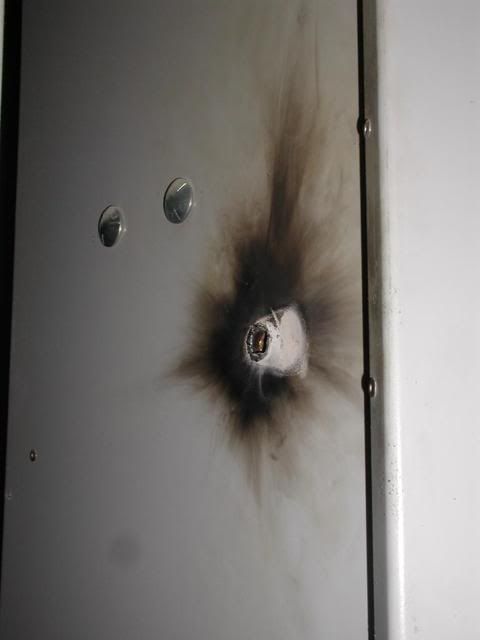brian john
Senior Member
- Location
- Kilmarnock, Va
- Occupation
- Retired after 52 years in the trade.
For the 3rd time this year I have had a call to investigate a tripping Ground Fault Protection (GFP) on a main switch. In each case this cause of the tripping has been the same.
In each case there were multiple neutral to ground connections downstream from the main neutral ground bond. Two of the distribution systems were a main switch with a distribution trough feeding multiple feed through revenue meters and/or CTs cabinets, then to the end user's disconnect.
The neutrals were left mounted to the back box in the meters/CT's cabinets and then in the end users disconnect the neutral was bonded a 3rd time (at the main in the Meter/CT cabinet and in the disconnect).
In one case the GFP was set at 100 amps, one case at 400 amp and another at 600 amps. That is a lot of ground current in every case that is required to trip the GFP.
While grounding can be difficult to understand for some, this is BASIC GROUNDING, you bond the neutral to ground at the main service NOT anywhere down stream of the main. If you ground down stream from the main you can have ground current that can result in tripping the mains's GFP and under fault conditions you can negate the effectiveness of the GFP.
All systems were installed by reputable EC's that supposedly have qualified electricians.
In each case there were multiple neutral to ground connections downstream from the main neutral ground bond. Two of the distribution systems were a main switch with a distribution trough feeding multiple feed through revenue meters and/or CTs cabinets, then to the end user's disconnect.
The neutrals were left mounted to the back box in the meters/CT's cabinets and then in the end users disconnect the neutral was bonded a 3rd time (at the main in the Meter/CT cabinet and in the disconnect).
In one case the GFP was set at 100 amps, one case at 400 amp and another at 600 amps. That is a lot of ground current in every case that is required to trip the GFP.
While grounding can be difficult to understand for some, this is BASIC GROUNDING, you bond the neutral to ground at the main service NOT anywhere down stream of the main. If you ground down stream from the main you can have ground current that can result in tripping the mains's GFP and under fault conditions you can negate the effectiveness of the GFP.
All systems were installed by reputable EC's that supposedly have qualified electricians.
Last edited:


